Kuldip and I were taken completely by surprise recently when we visited Lucknow, the capital of Uttar Pradesh. It’s the cleanest and the prettiest city I’ve seen in India. I can’t believe that there’s hardly any litter on the streets of Lucknow and it’s nearby villages; that’s saying something for incredibly dirty India.
Uttar Pradesh, formerly the province of Awadh, was ruled by the Persian Oudh dynasty for over 150 years from the early 18th century. In 1755, the fourth Nawab, Asif-ud-daula, moved the kingdom’s capital from Faizabad to Lucknow and founded this thriving city. He was the greatest builder of all the Nawabi rulers. Without Asif-ud-daula, Lucknow wouldn’t have the great Rajput and Moghul-inspired skyline it has today. My favourite places in the old Nawabi city are the Bara Imambara (Lucknow’s biggest draw card) and the extraordinary La Martiniere College.
The vast Bara Imambara complex comprises four primary structures plus two impressive gateways leading to the main prayer hall, the Bara Imambara. The other components are the Asfi Mosque and the Bhool Bhulaiya or Labyrinth. A stepped well, called the Shahi Baoli, was built early on to provide water. Legend has it that when the British invaded Lucknow, a senior Nawabi administration officer committed suicide by jumping into the well clutching the keys to the treasury. As I peered into the murky depths, I wondered if the keys were still down there.
The founder of the La Martiniere College was a French soldier from humble beginnings who arrived in India in 1752 and never left. Labelled an adventurer by many, and an entrepreneur by some, Major General Claude Martin’s curriculum vitae is an interesting read. He was a self-made man with many talents.
Shortly after the city was founded, Martin worked for Asif-ud-daula as superintendent of the arsenal. It was here that Martin made his fortune. The two men had much in common, including a love of architecture, and quickly became friends. In addition to working with the Nawab on some of his major projects, Martin’s most notable creation is his stately home, Constantia, which, upon his death, became the first hall of the La Martinere College.
It’s the mixture of building styles in that make Constantia extraordinary. The combination of Italian Palladian, Ottoman and Moghul and Rajput architecture is like India itself; it’s chaotic but the chaos works. It is often called a “wedding-cake in brick, a Gothic castle and a baroque folly.” The splash of an English Wedgewood effect on the ground floor is the icing on Martin’s curious cake. What is within the framework of the building that comprises four large octagonal towers, also makes this mansion an absolute marvel. In addition to being a lavish home with a sizeable chapel, Constantia was also a fortress complete with cannon and arsenal.
Construction of the six-storey building began in 1795. Sadly, Martin died aged sixty-five in September 1800, two years before it’s completion. Since Martin is laid to rest in the mausoleum he built for himself in the basement; Constantia is also known as the “finest and largest example of a European funerary monument in the subcontinent.”
Kuldip and I have seen some excellent examples of Hindu and Islamic architecture in other Indian kingdoms past. In addition to wanting to see more of it in Lucknow, we also went there to sample it’s legendary Awadhi cuisine, which also didn’t disappoint. True to its word, Lucknow is a gourmet’s paradise. For example, the melt-in-your-mouth Kakori Seekh Kebabs made from minced lamb, called mutton in India, are sensational. The story is that a chef who worked for a toothless Nawab created them. These kebabs are soft food at it’s best.
The local department of tourism works hard to generate awareness of Lucknow and its sightseeing treasures. Since it’s off the tourist track, though, their efforts are lost. The locals we came into contact with, including the front office staff at our 4-star hotel and our taxi driver, didn’t have a clue about the places of historical interest that we wanted to see.
Weatherwise, October to March is the best time to visit. We went there in summer in May. As forecast, the mercury hit 45 degrees celsius every day resulting in Kuldip getting hotter under the collar than usual in our non-tourist taxi.
Even though Lucknow is a bit remote, do yourself a favour; veer off the tourist track and go there. If you do, I recommend you hire a registered guide to take you around. It will save a lot of time and angst.
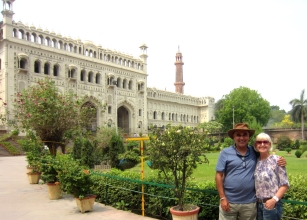
Us at the Bara Imambara
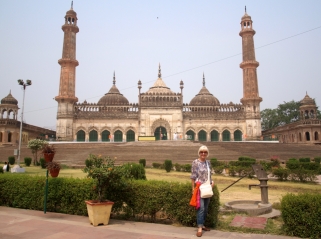
The mighty Asfi Mosque inside the Bara Imambara complex.
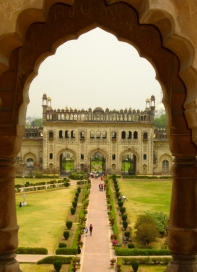
A shot of one of the Bara Imambara’s imposing gates taken from the Labyrinth’s roof-top terrace.
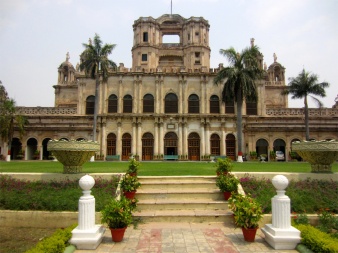
Martin’s extraordinary 6-story Constantia.
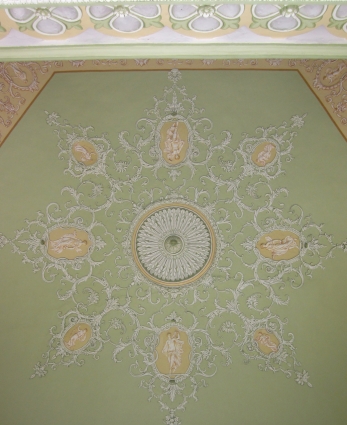
Some of the English Wedgewood effect included in Martin’s design.
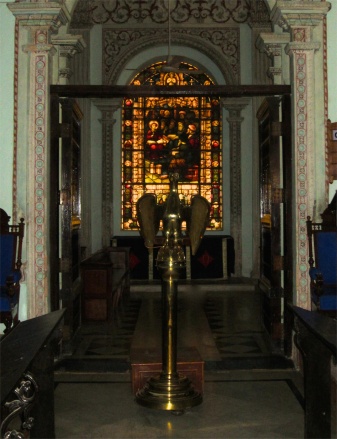
An impressive section of Constantia’s sizeable chapel.
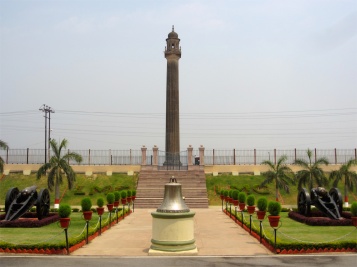
Remnants of Constantia’s arsenal.

I am living in lucknow
And studing at lamartiniere college
I am glad you liked our heritage
LikeLike
Good luck with your studies and I’m delighted you liked my story about Lucknow. Kind regards, Lynnie
LikeLiked by 1 person
Thank you
Hope you had a good visit
You are always welcome here
LikeLike
Wow what an amazing place
LikeLike
Thank you, Yvette for commenting on my blog. I’m delighted you liked the story. Cheers Lynnie
LikeLike